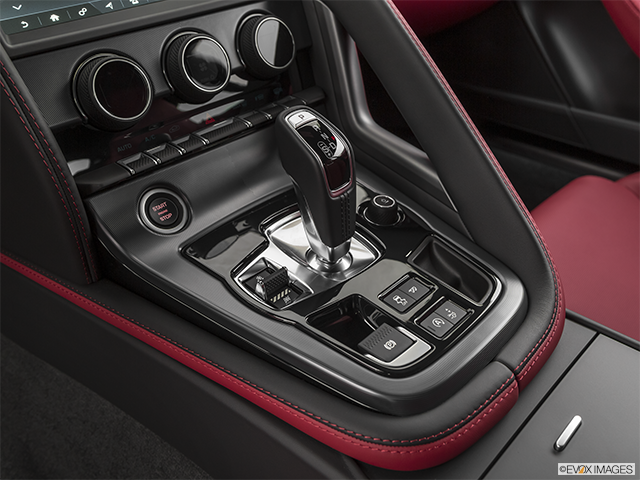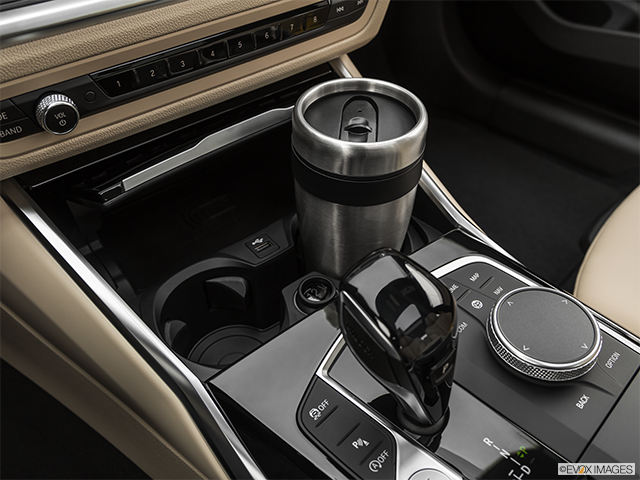In the past, automotive dealers relied heavily on foot traffic to sell cars. However, the car buying process has changed drastically over the years. Automotive consumers used to visit up to five dealerships before making a purchase decision, but today’s consumers only visit one or two. Because foot traffic has declined, auto dealers must generate new leads online instead of waiting for customers to visit their showroom.
Generating new leads online is only half the battle. The next step is effectively managing these leads to convert them to customers. How does online lead generation for auto dealers work? What can dealers do to effectively manage new leads and increase sales? Here’s everything you need to know:
Different Types of Leads
It’s important to understand the various types of leads your dealership might generate. The main categories of leads are:
Marketing Qualified Leads: This type of lead is generated as a result of your marketing efforts. Although a marketing qualified lead is ready to engage with your dealership, they may not be ready to engage with your sales team. You must make an effort to nurture these leads before handing them off to sales.
Sales Qualified Leads: This type of lead is a contact who has engaged in some type of action that indicates they are ready to purchase a vehicle from your dealership. For example, someone who contacts you via your website to find out if a specific vehicle is available at your dealership is a sales qualified lead.
Product Qualified Leads: This type of lead is a contact who has already tested your product and indicated that they may be interested in purchasing it. For example, someone who takes a test drive of a vehicle at your dealership is a product qualified lead.
Service Qualified Leads: This is a contact who has engaged with your service team, not your sales team, and indicated that they are interested in making a purchase. For example, if someone brings their vehicle in for repairs and tells your service team that they are thinking about buying a new car, they would be classified as a service qualified lead.
In general, online leads are either marketing qualified or sales qualified leads.
An Overview of the Internet Lead Generation Process
Generating new leads online is crucial to your dealership’s success. But how does it work? Here’s a basic overview of the process of generating new online leads:
A member of your target audience encounters your dealership through one of your marketing efforts, such as a social media post or email newsletter.
The user clicks on the “call-to-action,” which may be an image or button that tells users to take a specific action. For example, it may direct users to contact your business, browse your inventory, sign up for a special offer, or learn more.
Clicking on the call-to-action will take the user to one of your dealership’s landing pages, which is a web page that is specifically designed to help you generate new leads.
The user will be instructed to enter their information in exchange for some type of benefit. The information you capture with this form may vary, but in general, you should ask for their name, phone number, and email address. For example, the user may need to enter their contact information to claim a special offer, access your inventory, or contact you about a specific vehicle.
When a user submits their information using the online form, they are considered a new lead.
These are the steps your target audience must take to become leads for your dealership.
How to Implement An Internet Lead Management Process
All of your lead generation efforts will go to waste if you don’t have an effective lead management process in place. Lead management is the process of nurturing, analyzing, and tracking leads from the time they are generated until they are converted. Follow these steps to successfully implement a lead management process for your dealership:
Launch A Lead Generation Campaign
Qualify New Leads
Nurture Leads
Hand Qualified Leads to Sales
Track Your Results
Launch A Lead Generation Campaign
You must generate new leads before you can manage, nurture, analyze, and track them. You can launch lead generation campaigns using various marketing channels, including blog content, ads, social media, and email campaigns.
Creating content establishes your dealership as an expert in the automotive field and provides your target audience with relevant, valuable information about automotive topics. Content marketing can also help you generate new leads. Include a call-to-action either within the content or immediately at the end of it. If the user is interested in your content, they may be motivated to click on the call-to-action to engage with your dealership.
You can also create ads on Google, Facebook, LinkedIn, YouTube, or other channels to generate new leads. Every ad should include a relevant call-to-action at the end that directs users to a landing page where they can submit their information.
Include links to your landing pages in all of your posts and stories to generate new leads via social media. Make sure to use high-quality car images to grab your followers’ attention and motivate them to click on your call-to-action. You can even include a link in the “About” section of your social media profile.
Email is a great way to communicate with potential leads who are already familiar with your dealership. Launch an email newsletter campaign to persuade people on your email list to take a specific action such as booking a test drive, learning more about a new model, or scheduling an appointment in your showroom.
These are some of the many marketing efforts you can use to generate new leads.
Qualify New Leads
The next step is qualifying new leads that are generated through your marketing efforts. Lead qualification is the process of evaluating new leads to determine how likely they are to convert.
The most common lead qualification method used by auto dealers is lead scoring, which involves assigning a number to every new lead that indicates how likely they are to purchase a vehicle. The numbers assigned to new leads should fall on a scale ranging from “interested,” which means they are not very likely to convert, all the way to “ready to purchase,” which means they are very likely to convert.
It’s up to you to determine what factors you should consider when assigning scores to new leads. Some factors you may want to consider include demographics, source of the lead, and behavior. For example, someone who has asked whether a specific vehicle is available at your lot is exhibiting behavior that indicates they are close to converting.
Everyone must use the same factors when scoring new leads. It’s also important to start scoring new leads immediately after they are generated. If you wait too long to score a new lead, they may start to lose interest in engaging with your dealership. In other words, the longer you wait to start qualifying, the lower the user’s score might fall.
After assigning scores, prioritize your leads by sorting them from highest to lowest score. This way, you will know which leads you need to make contact with right away.
Nurture Leads
The leads with the lowest scores are the contacts who are the least likely to purchase a vehicle right now. Even though these leads aren’t ready to buy a car now, they are still valuable to your dealership. Instead of tossing them aside, take the time to nurture them.
Leads that aren’t ready to buy yet may still be in the awareness or discovery stages of the consumer buying cycle. This means they are still researching different vehicles and dealerships, comparing their pros and cons, and trying to figure out which vehicle is right for them and where they should buy it from.
Don’t let these leads make these important decisions on their own. Part of your lead management process should include nurturing these leads by providing them with the information they need to move closer to a purchase decision.
These leads aren’t looking for a sales pitch--remember, they aren’t ready to buy a vehicle yet. They are looking for content that answers their questions and helps them narrow down their options. Some forms of content that may help nurture these leads include white papers, e-books, high-quality car photos, and videos. Providing this content can push them further through the sales cycle.
Hand Qualified Leads to Sales
Some leads will need a bit of nurturing, whereas others should immediately be passed off to the sales team. It’s important to make sure you are only handing qualified leads with high lead scores off to the sales team. These are the leads that are ready to engage with a sales representative.
To ensure the process goes smoothly, keep these tips in mind when passing leads off to sales:
Instruct your sales team to contact qualified leads as soon as they receive them. Remember, the lead could lose interest in purchasing a vehicle if you wait too long to connect with them.
Make sure your sales team researches each lead before making contact with them. Sales representatives should know what the lead is looking for, how they submitted their information, and what they requested when contacting your dealership. This will help your sales team make more relevant sales pitches when talking to new leads. If a lead is interested in leasing a vehicle, you shouldn’t contact them to discuss financing options for buying a new car.
Keep your sales team motivated. Provide your sales teams with incentives that reward them for aggressively pursuing and converting qualified leads.
Track Your Results
You should continue to track your leads even after they are handed off to the sales team. In fact, you may need to reevaluate and rescore leads that are currently in the hands of the sales team. If their interest in purchasing a vehicle starts to fade, you may need to lower their score so your sales team can reprioritize their efforts. If there is a significant drop in a lead’s score, they may even need to be sent back to the marketing team for nurturing.
Tips for Effective Lead Generation & Management
At this point, you should understand how lead generation works and what you need to do to launch a lead management process for your dealership. If you are implementing a lead management process for the first time, there are certain things you can do to ensure it is a success. Follow these tips:
Use the right tools. Manually managing your leads is inefficient and time-consuming, so you should consider investing in lead management tools such as Salesforce or Hubspot.
Test different call-to-actions. Run multiple lead generation campaigns with different call-to-actions. Then, measure the results to see which call-to-action drove more traffic to your landing page and generated more leads.
Ask for your sales team’s input. Work with your sales team to figure out which factors you should consider when scoring new leads.
Create content for lead nurturing. Before you start generating new leads, take the time to create content that you can use to nurture leads. You will need to have this content ready once leads start coming in.
Set lead conversion goals for your sales team. Measure your sales team’s performance by tracking how many leads they are able to convert on a monthly basis.
Personalize your contact with leads. You should never send generic emails to leads you are trying to convert into customers. Every interaction with leads should be personalized to their needs.
Don’t buy leads. Buying leads is much easier than implementing a lead generation and management campaign. However, buying leads is not a good way to obtain high quality leads. Why? These leads don’t know your dealership and never made an effort to connect with you. Because of this, they probably won’t have very high lead scores.
Now you know the basics of increasing sales by implementing a successful lead generation and management campaign. Be sure to evaluate your efforts to ensure they are working as expected. If you identify any issues, don’t be afraid to adjust your strategy. Every dealership is unique, so you may need to make minor tweaks to ensure your strategy is right for your dealership.
DRIVING INNOVATION IN AUTOMOTIVE IMAGERY
The EVOX Images database features the most innovative packages of interior and exterior stills, 360º vehicle imagery, and VR experiences. At more than a million images strong, our team consistently raises the bar on industry standards, and offers an unmatched delivery schedule.
Complete. Easy. Powerful. EVOX.
SEARCH OUR BLOG













